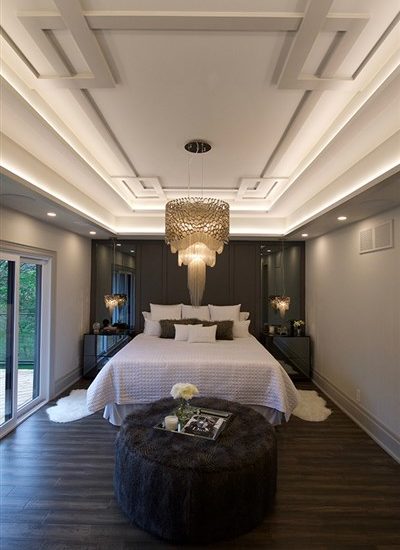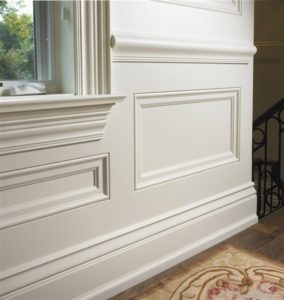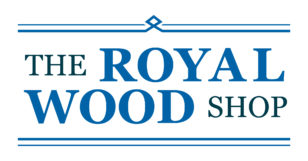Getting To Know The Different Types of Mouldings
Mouldings serve a variety of purposes in your home; for practicality, adding interest, or re-introducing some historical accuracy to a period property.
Most people know about the common types of mouldings, such as baseboard and crown, but these days there are literally hundreds of options to choose from and getting the right type can make or break the finish of a room.
These are just some of the options available and what they’re typically used for:
Crown
Crown moulding is the name used for a specific shape of moulding, angled to fit in the space at the top of a room where the ceiling meets the wall.
The style can range from something completely ornate, giving a room an elegant, timeless feel, to something plain and simple, used mainly to conceal minor cracks around the edge.
Crown moulding also comes in many different sizes, so it’s worthwhile thinking about the kind of house and room it’s going into. Your mouldings should keep with the character of your home and take the rooms’ proportion into consideration.
For example, a deep, intricately detailed moulding might not fit so well in a modern house with low ceilings.

Baseboard
Baseboards are a practical addition to any home; there to protect the bottom of the walls from damage where they meet the floor and cover gaps where flooring has been installed.
Although they are functional, the type and profile of baseboards you choose can really transform the space. Rounded, flat, sculpted, MDF, softwood or hardwood? The options are endless!
Remember to consider how your chosen baseboards will combine with other mouldings in your room and whether you want to paint or stain them.
Decisions, decisions!
Chair Rails
Chair rails are a type of moulding fixed horizontally around the walls of a room (usually about a third up) and were used traditionally to protect dining room walls from damage from the back of chairs.
Recently, they’ve been used as more of a design element to separate the two areas of a wall for decorative purposes or as a top edge for a Wainscoting feature.
Picture Rails
Similar to chair rails, picture rail mouldings can be found horizontally around walls but close to the top of the ceiling. Picture rails were once a functional way to keep swapping out pictures on walls without making holes.
Nowadays, people are using picture rails to display much more than just pictures. Check out these quirky ideas for ways to use picture rails in your home.
Casing
Casing is a general term to describe any sort of moulding that encases something but is normally used to cover up the gap between the wall and the window or door. Casing attaches to the door jamb of a window or door (the square frame that surrounds the sides of a window or door).
It’s easy to overlook casing as a real design statement because its presence is so subtle, but the attention-to-detail can really change the feeling of a home from unforgettable to ‘wow’, especially in entrance halls where first impressions count!
Wainscoting
Traditional wainscoting is achieved by using certain wall mouldings in-between a chair rail and baseboard on the lower part of a wall. This classic look can be either raised, flat panels, or a vertical tongue and groove wood.
If the traditional look is not your thing, don’t worry, there’s an array of decorative wall moulding options that are both beautiful and contemporary.

Patterns Common to Different Moulding Types
There are some phrases, common to patterns found in different moulding types, that you might come across as you’re browsing for inspiration:
- Egg and Dart – Refers to a pattern on mouldings which alternates an oval (egg) shape and a dart shape. Usually found on ceiling coving and medallions.
- Bead / Pearl – Patterns of small rounded beads in mouldings, again popular for ceiling coving and also chair rails.
- Barrel and Bead – A pattern of bead shapes, alternating with a barrel shape. This decorative trim is a classic style popular for chair rails or paneling and is sometimes also called ‘sausage and bead’!
- Dentil – A rounded ‘teeth’ effect on moulding. This can be used to add more detail to other kinds of moulding like kitchen cabinets or looks equally impressive around a focal point fireplace.
Mouldings For Every Room and Home
Believe it or not, we’ve only been able to cover a snippet of what’s available in the way of mouldings!
With the huge range of types, sizes, and materials of moulding on the market today, you’re really only restricted by imagination!
Visit The Royal Wood Shop
We carry the biggest selection of mouldings and always have friendly, experienced staff on-hand at our showroom 6 days a week to answer any questions you might have.
Browse the catalogue, call or pop in and see us today if you want to discuss more custom ideas for your renovation.
